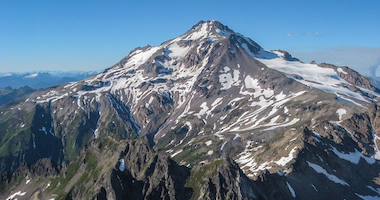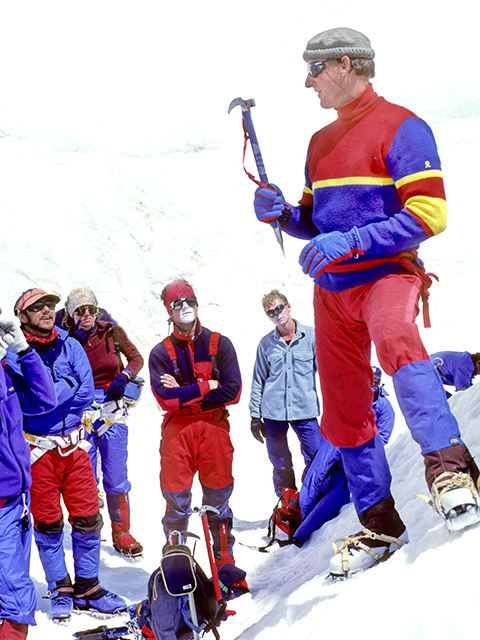Most Popular Entries
RMI Guide Mark Tucker checks in from Shira Plateau on Kilimanjaro
On The Map
Posted by: Mike Walter, Pete Van Deventer
Categories: Expedition Dispatches Mt. McKinley
Elevation: 9,600'

On The Map
Team, We wish you GREAT LUCK on McKinley. Be safe. Sara and Bill McGahan
Posted by: Bil McGahan on 5/17/2012 at 3:40 pm
happy birthday carl & best wishes for great weather.
summit on!
Posted by: lars on 5/14/2012 at 6:37 pm
Happy Thanksgiving! Good look on summit day. David you are missed, thinking of you.
Posted by: Birgitta Schindler on 11/24/2011 at 10:35 am
PRAYING TODAY BRINGS GREAT CLIMBING WEATHER! BE SAFE!!
Posted by: TOM WENDEL on 11/22/2011 at 9:26 am
Posted by: Eric Frank, James Bealer, Jack Delaney
Categories: Expedition Dispatches Mt. McKinley
Elevation: 11,000'
Wednesday, May 26, 2021 - 10:05 pm PT
Today we mastered the classic mountaineering skills of reading, napping and making breakfast last three hours. All part of a well rounded rest day.
It was sunny, but windy for most of the day so we spent our day hanging out in the tents and letting our bodies recover from the toil of the last few days.
Tomorrow we plan to move up to 14,000' Camp and get in position for the upper mountain.
We are watching updates Heidi tracking your progress one day at a time! Stay safe and sending love way up to your altitude!
Posted by: Maxine Kay on 5/27/2021 at 7:52 am
Posted by: Mike Haugen, Matias Francis, Jack Delaney, Liam Weed
Categories: Expedition Dispatches Mount Rainier
Elevation: 14,410'
RMI Guide Mike Haugen checked in via radio at 7:40 am as the Kautz Seminar July 18 - 23 team was just reaching the crater rim. The team did well and climbed strong from their camp at the top of the Wapowety Cleaver. After enjoying the views from the summit the team will descend via the Disappointment Cleaver route. This group met at Rainier BaseCamp on Sunday, July 18 and after two days of off mountain training began their ascent via the Kautz Glacier Route. Their time on the mountain included glacier travel training as well as focusing on techniques required for the current conditions on the upper mountain. The team will conclude their program with a celebration in Ashford later today.
Congratulations to the Kautz Seminar climbers!
Amazing accomplishment Dustin! Can’t wait to hear all about it!!
Rose
Posted by: Rose on 7/24/2021 at 12:48 pm
Way to go Dustin! We are so proud of your accomplishments! Can’t wait to hear about your expedition when you get back to work! Your fans at iMemories!
Posted by: Sheila Beals on 7/23/2021 at 11:56 am
Posted by: Elias de Andres Martos, JT Schmitt
Categories: Expedition Dispatches Huascaran
Elevation: 20,846'
So proud of you guys! Great job!
Posted by: Terry Wisler on 7/15/2019 at 2:07 pm
Yay! Congrats Kim and team!!!
Posted by: Ally on 7/15/2019 at 12:40 pm
Posted by: Mike King, Jess Wedel, Mike Bennett
Categories: Expedition Dispatches North Cascades
Elevation: 10, 781'
RMI Guide Mike King and the Mt. Baker Coleman - Deming July 16 - 18 reached the summit of Mt. Baker just before 9 am today. Mike reported cloudy skies below 8,000' but it was clear above as they made their way to the top. All the big peaks were visible as "islands" coming through the marine layer clouds. The team will return to camp for a final night on the mountain. Tomorrow they will break camp, descend to the trailhead and complete their program.
Nice work team!
Congratulations so glad all are safe.
Posted by: Donna C. Cameron on 7/17/2022 at 9:36 pm
Congratulations to the climbers and to the guides for reaching the top. Kuddos to you and your determination and perseverance.
Shout out to Ana and Rathan for taking up the challenge. Waiting to hear about the climb
Posted by: Shilpa on 7/17/2022 at 3:27 pm
Mark, the market is responding well to your climb. It might even surpass you. May both entities, animate and inanimate continue their upward trend !
PS We watch the pictures carefully. You are eating better than we are.
Posted by: Sally Stein on 4/10/2013 at 8:19 am
Posted by: Avery Parrinello, Jack Delaney, Liam Weed
Categories: Expedition Dispatches Alaska Mt. McKinley
Elevation: 7,800'
Sunday, June 18, 2022
Dun-dunana-dun-dun-dunnn (Imperial March music...please use your imagination)
We continued our migration down glacier from 14 Camp to the airstrip. Instead of a Flying V, we are in a Tromping I, roped together as always but this time it is very obvious as to why. The Kahiltna Glacier has melted down and broken up significantly since our last crossing. Weaving left and right, searching high and low for snow bridges that looked like they would support our weight. We finally make it the base of Ski Hill and decide to call it a day. The heat of the day has started to weaken the already soft snow and low and behold who do we see on the horizon??! It’s an RMI team headed uphill! Andy Bond and crew have just arrived at Camp 1. So we decide to spend the night with them to both let the snow and our bonds of friendship strengthen! Ends up there are mutual friends not only amongst the guides but also the teams! Let us rejoice! Tomorrow in the wee early hours of the morning we shall resume our march with refrozen snow and renewed strength in our quads.
We have the downhill mentality and the end is in sight (figuratively)!
Cheers,
RMI Guides Avery Parrinello, Jack Delaney, Liam Weed and the team























Jambo, Tuck! I wish I was there, too. Have a great trip!
Steve Evans
Posted by: Steve Evans on 7/26/2012 at 9:44 am
Hi Mitch,
I hope things are going well for you and Dion. I have no doubt that you’re doing great. Wishing you both a safe, successful experience.
Posted by: Darlene Silvestri on 7/26/2012 at 7:49 am
View All Comments